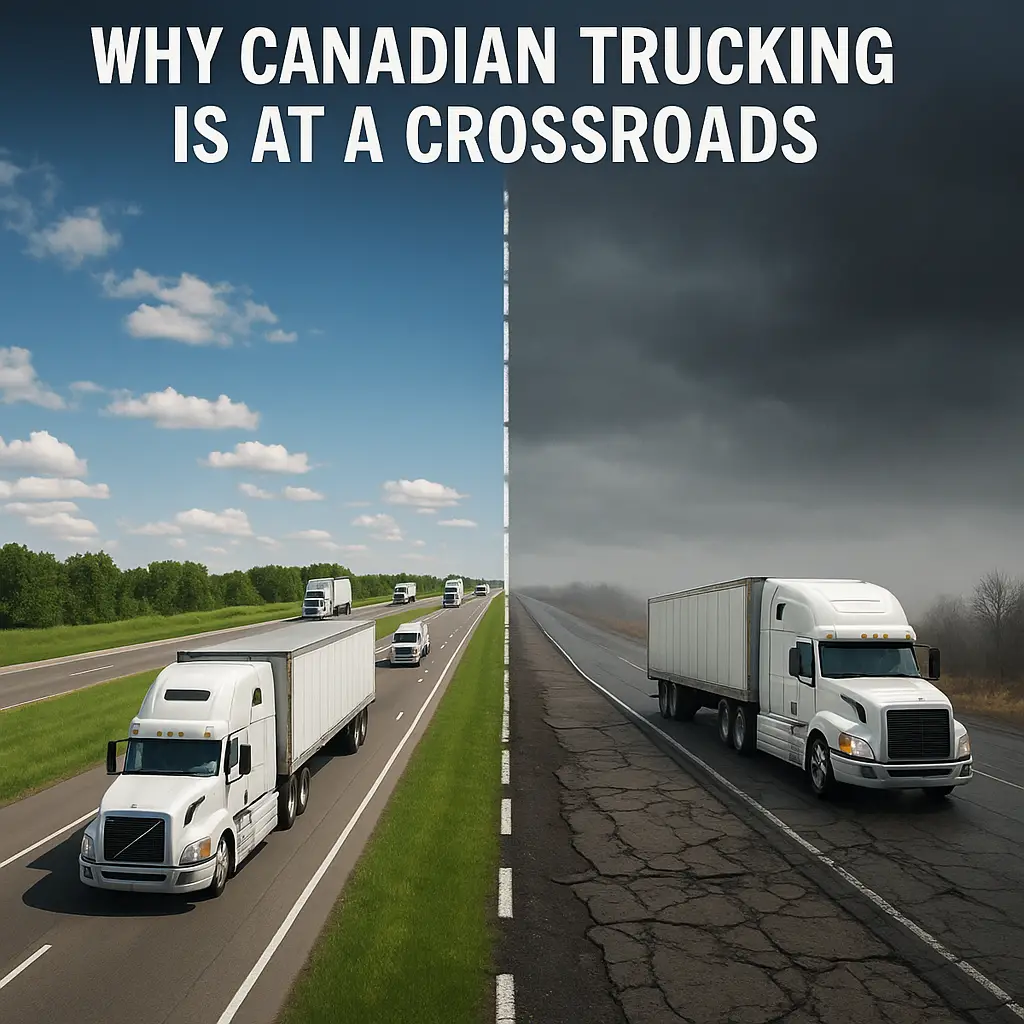There is no doubt that U.S. President Donald Trump’s tariffs have struck a heavy blow to an already strained Canadian economy. The impacts on all the industries are detrimental, however, the trucking industry is one of those that have been affected the most.
The Canadian trucking industry was already under severe strain following the post COVID freight bust. According to data from Statistics Canada, over 4,000 trucking related businesses ceased operations between early 2023 and mid 2024, which accounts for a 27% increase in closures as compared to the pre-pandemic average. Insolvency filings in the transportation and warehousing sector rose by 39% YoY in 2023, according to the Office of the Superintendent of Bankruptcy.
This downturn is driven by several factors:
Freight rates, which had surged during the pandemic, declined by more than 40% between 2022 and 2024 (Freightos Baltic Index).
Diesel prices have remained volatile, with Canadian national averages hovering between $1.90–$2.10 per litre in 2024, which was about 15% up from pre-2020 levels.
Insurance premiums and equipment financing costs have surged amid high interest rates, squeezing profit margins further.
During the COVID-19 pandemic, snarled supply chains drove up shipping demand, and the number of new carriers registered in Canada grew by over 15% in 2021 alone. However, as freight volumes normalized, the industry entered what experts now call a prolonged freight recession.
According to ACT Research, the current U.S.- Canada trade tensions could extend the freight recession into late 2025. Similarly, the OOIDA Foundation’s Q1 2025 report predicts a continued contraction in small carrier profitability unless tariff clarity improves.
The Ontario Trucking Alliance (OTA) has reported an unusual short-term spike in shipments in late 2024. “There’s been a big uptake in business in past months, not because the economy has changed, but because people have tried to rush their products over the border and stock up before tariffs hit,” says OTA CEO Stephen Laskowski.
In southwestern Ontario, roughly 35% of freight traffic is related to the automotive manufacturing sector. With components often crossing the border 5 to 8 times before final vehicle assembly, even a modest tariff on parts can drive significant cost increases. A 10% tariff on automotive components, for instance, could raise end to end costs by as much as $1,200 per vehicle, according to analysis by Automotive Parts Manufacturers’ Association (APMA). Trucking companies transporting these parts must now account for delays at customs, rerouting, and increased compliance requirements compounding delivery times and eroding margins.
“Due to the uncertainties involved, most companies are refraining from capital spending, fleet upgrades, and purchasing new equipment until they better understand the impact of these recent tariffs,” says Chris McKee, Director of the Atlantic Provinces Trucking Association.
While the short-term impacts of these tariffs are more obvious and severe, the long-term impacts of tariffs will depend on how trade policies will evolve over time and how the businesses will adapt to these changes. Some businesses may decline while others may adapt and establish themselves to come out even stronger.

